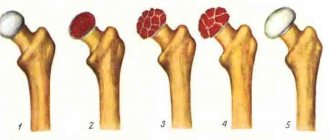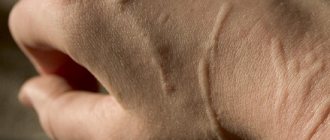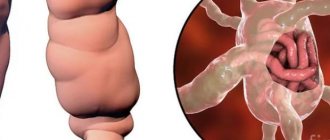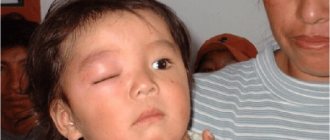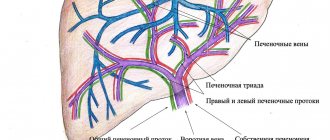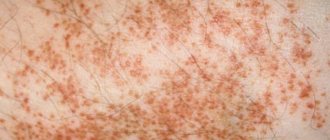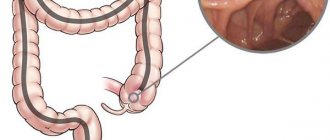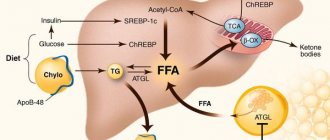Joint pain that is harmless at first can cause disability without proper treatment. This happens not only with arthrosis, when articular cartilage gradually degrades. Ankylosing spondylitis, or ankylosing spondylitis, or ankylosing spondylitis, also leads to sad consequences - this diagnosis can be heard at an appointment with a rheumatologist. The symptoms of the disease are very similar to osteoarthritis, but the principles of treatment differ. What do doctors advise in such cases?
In men, ankylosing spondylitis is diagnosed 2-3 times more often than in women
What is ankylosing spondylitis
This term refers to chronic progressive joint disease. In 80% of cases it begins with back pain (intervertebral joints are damaged), much less often with peripheral arthritis in the joints. The inflammation begins where tendons and ligaments attach to bone and spreads to the small joints between the vertebrae. Gradually the bones fuse and the spine slowly turns into one solid bone.
Since even the ligaments ossify, the person completely loses flexibility and cannot move. The inflammatory process spreads to the peripheral joints, which may already be affected by arthrosis, as well as to the eyes, lungs, kidneys and heart. Without timely treatment, the prospects are very sad.
Organization of a sleeping place
The patient must properly organize his sleeping place. You should choose a flat and firm mattress. At the initial stages of the disease, the pillow should be abandoned. This will avoid the development of cervical lordosis. It is best to sleep on your stomach. As the disease progresses, you can place a cushion or thin pillow under your head. Legs should be kept straight.
Why does ankylosing spondylitis develop?
No one knows the exact cause, but it is assumed that the disease develops due to malfunctions of the immune system, especially in the presence of provoking factors:
- too low birth weight;
- infectious disease at the age of 5-12 years (infections of the genitourinary system and intestines are of particular danger);
- hypothermia;
- spinal and pelvic injuries;
- the presence in the body of enterobacteria that cause arthritis, etc.
The HLA-B27 gene is present in almost everyone who has been diagnosed with ankylosing spondylitis
Nonsteroidal anti-inflammatory drugs (NSAIDs)
They are divided into non-selective (inhibiting cyclooxygenase-1 and cyclooxygenase-2) and non-selective (inhibiting only COX-2). Patients are prescribed drugs from both groups.
Selective NSAIDs:
- The very first and most popular drug to appear on the pharmacological market is nimesulide (Nimesil, Nise). The maximum dose for an adult is 400 mg per day, in several doses. Just like other NSAIDs, it has side effects. The main side effect is an increased risk of liver damage (especially if the patient already had problems with it). There may also be headaches, nausea, vomiting, and ulcerations of the mucous membrane of the stomach and intestines. But the benefits of using the drug are much higher than the possible risks.
- In addition to nimesulide, the patient may be prescribed Celebrex or meloxicam.
Non-selective NSAIDs:
- Diclofenac. Gold standard in rheumatology. Effective in the treatment of most rheumatic diseases. Usually prescribed in tablets of 50 mg 3 times a day. The dose may vary according to the needs of the patient. Unfortunately, due to its non-selectivity, diclofenac has several unpleasant side effects: irritation of the mucous membrane of the gastrointestinal tract (up to the formation of ulcers and erosions in the stomach and duodenum), liver damage, nausea and vomiting, inhibition of hematopoietic processes. If for gastric manifestations the patient can be prescribed omez 30 mg 2 times a day, and for nausea cerucal, then there are no special measures for liver damage and inhibition of hematopoietic processes.
- Sometimes, instead of diclofenac, patients are prescribed ketoprofen, ibuprofen, and indomethacin. But the side effects of all non-selective drugs are the same.
Forms of ankylosing spondylitis
Depending on the location, the disease has the following forms:
- central – only the spine is affected (accounts for about half of all cases);
- rhizomelic - the shoulders and hip joints are also affected;
- peripheral – affects, in addition to the spine, the knee, elbow and ankle joints (diagnosed mainly at the age of 10-16 years);
- Scandinavian - similar in symptoms to rheumatoid arthritis, affects all joints, including small ones;
- visceral - inflammation also extends to blood vessels, kidneys, eyes and other organs.
The earlier ankylosing spondylitis is detected, the better it is treated
Possible complications
Ankylosing spondylitis is dangerous due to damage to internal organs, in particular:
- heart muscle (partial or complete blockade, valve defects, inflammation of the aorta);
- eye (inflammation of the iris and ciliary body - iritis and iridocyclitis);
- lungs (fibrosis);
- kidneys (amyloidosis, uremia, renal failure).
Men are more susceptible to the development of complications, especially those who neglect medical care and refuse to look for and influence the causes of their own condition.
Features of symptoms
The most common symptom is back pain, which worsens during sleep and improves with exercise. In addition, a person may feel:
- moderate pain in the groin, sacrum;
- stiffness of movements;
- curvature of the spine and stoop;
- feeling of chest tightness;
- dizziness and tinnitus;
- swelling of the joints.
With ankylosing spondylitis, the temperature may also rise at the end of the day, weight may decrease, and the person will quickly get tired. The eyes may become inflamed, sometimes heart valve failure develops and difficulty breathing occurs. Complications in the functioning of the nervous system are not uncommon. Similar symptoms occur with arthrosis, osteochondrosis, spondylosis, rheumatoid arthritis, so it is very important to make a correct diagnosis.
Ankylosing spondylitis has symptoms similar to arthrosis
Symptoms
Since this disease occurs in very rare cases in women, the symptoms are slightly different from the symptoms of men. This is explained by the anatomical features of the female body and physiological data. The main symptoms of ankylosing spondylitis in women are the following:
- severe pain in the lumbar and sacral area, which is especially intense in the morning;
- after waking up, it is difficult for the patient to move his limbs, there is slight soreness in the muscles;
- with physical activity the pain subsides a little, and in a calm position it becomes stronger;
- if the spine is affected, the patient begins to experience stooping and slight curvature, and if the peripheral joints are affected, swelling and inflammation of the soft tissues around the bone structure;
- the presence of eye diseases that are difficult to treat (episcleritis, iritis).
In women, the disease begins almost imperceptibly and gradually. Several weeks or months may pass before the first symptoms appear, during which women experience dizziness, weakness and drowsiness. Also, representatives of the fairer sex may experience sudden mood swings and excessive irritability. Stiffness and pain occur at night and become worse in the morning. After taking a warm bath or physical activity, the severity of symptoms decreases.
The spread of pain occurs from the hip joint to the cervical spine. After which the patient develops a stoop (the spine bends in the thoracic region). In such cases, a person may complain of constant muscle tension. Subsequently, the pathology leads to complete fusion of the vertebrae, ossification of the intervertebral discs and the formation of bone structures between the vertebrae. All this can be viewed in detail on x-rays and MRI results.
In addition to the main ones, there are also extra-articular symptoms, one of which is damage to cardiac tissue (myocarditis, heart disease) or blood vessels
How is ankylosing spondylitis diagnosed?
As with arthrosis of the knee, shoulder or hip, this disease involves changes in the articular cartilage. The pathology takes many years to develop, and the first symptoms appear when the joints have already significantly degraded. To clarify the diagnosis, a rheumatologist may prescribe the following examinations:
- X-ray;
- MRI;
- test for histocompatibility antigen, which is responsible for predisposition to this disease;
- Ultrasound of hands and feet;
- laboratory tests - ESR, C-reactive protein (the most informative in determining the current stage of the inflammatory process);
- examinations of other systems (fluorography, electrocardiography, consultation with an ophthalmologist, etc.).
Diagnosing ankylosing spondylitis is very difficult
Pathogenesis
Ankylosing spondylitis mainly affects cartilaginous joints. Articular cartilage due to autoimmune effects is subject to inflammation and destruction. In this case, there is no infection in the joint cavity, unlike septic infectious arthritis.
Destructively altered articular surfaces lose their congruence (anatomical correspondence to each other), which is manifested by pain and motor limitations. Subsequently, the pathology spreads to the (subchondral) bone located under the cartilage, to nearby muscles and ligaments.
All these structures are also subject to destruction, and connective tissue grows in their place. This tissue tightly and motionlessly fixes the elements that form the joint. Subsequently, these articular elements grow together. This is how ankylosis develops.
How is ankylosing spondylitis treated?
As in the treatment of osteoarthritis, a rheumatologist selects an individual treatment regimen - combines medicinal and non-medicinal methods. The goal of treatment is to eliminate pain and inflammation and slow down the progression of the disease. For this purpose, they resort to medications, physical therapy, recommend special exercises, and in severe cases, surgical intervention (joint replacement, fixation of vertebrae or straightening of a deformed spine).
The best physiotherapy for this diagnosis is UV irradiation, UHF therapy of joints, electrophoresis of novocaine or Parfenov's liquid. You can also get a certain improvement after a course of ultraphonophoresis with hydrocortisone, after taking salt and hydrogen sulfide baths. In the inactive stage of the disease, balneotherapy is indicated.
In case of ankylosing spondylitis, the patient is given an individual exercise therapy program. It includes exercises for stretching the spine, bending, Nordic walking and swimming, yoga or complexes with a gymnastic stick. The main thing is not to experience discomfort, otherwise you can harm the affected joints.
In case of ankylosing spondylitis, you can perform the following complex of exercise therapy, which over time will alleviate the general condition:
Diagnostics
Ankylosing spondylitis gives a favorable prognosis for life if the patient seeks medical help in a timely manner. With timely diagnosis and correct diagnosis, the doctor can prescribe effective treatment. There are several diagnostic methods that help confirm the diagnosis. First, the doctor conducts a full medical examination, during which he finds out all the disturbing symptoms.
The specialist is guided by the following indications: for about a month the patient has been bothered by lumbar pain, which becomes less pronounced after exercise or a hot shower, there is slight stiffness when bending and turning the back, it is difficult for the patient to inhale and exhale fully, severe pain is observed in the peripheral joints and sacrum. inflammation and swelling.
If all of these symptoms are present, an appropriate diagnosis is made and the doctor prescribes a course of medication in combination with physical exercise. If a specialist finds it difficult to make a diagnosis or wants to accurately confirm his fears, then the patient is prescribed one of the instrumental research methods. This may be an X-ray or CT (computed tomography) scan, which uses X-rays to take detailed photos of the bony structures of the spinal column.
If the therapist suspects that the patient has ankylosis, he refers her for a consultation with an orthopedist, vertebrologist or rheumatologist
Another method is MRI (magnetic resonance imaging), which examines the human body using electromagnetic waves. This is a relatively safe diagnostic method that allows you to obtain photo sections with a three-dimensional image of the organ. In addition to instrumental diagnostics, the woman is prescribed laboratory tests. First of all, blood is drawn to determine the erythrocyte sedimentation rate. If the indicators are normal, then this indicates the absence of inflammatory processes.
What medications can be prescribed
Depending on the manifestations, the rheumatologist may include the following drugs in the treatment regimen:
- nonsteroidal anti-inflammatory drugs, such as indomethacin and diclofenac, for pain relief;
- hormonal;
- immunosuppressants (if the cause is immune in nature);
- inhibitors of TNF-alpha and B-cell activation;
- chondroprotectors (in the early stages they stop the degradation of joints, accelerate the restoration of cartilage and reduce pain).
As with other joint diseases, ankylosing spondylitis can have different development scenarios. If it is detected too late and left untreated, it can result in disability. In the early stages, a person has every chance to take control of the disease and continue to lead a full life.
Prescription of selective immunosuppressants
Drugs that stop the work of tumor necrosis factors are increasingly used to treat ankylosing spondylitis.
Selective immunosuppressants are prescribed only when basic therapy does not produce the desired effect. These drugs are quite expensive, and their use increases the risk of developing tuberculosis, sepsis and other severe infections due to suppressed immunity.
These medications include Etanercept (Enbrel), Adalimumab (Humira), and Infliximab (Remicade).

